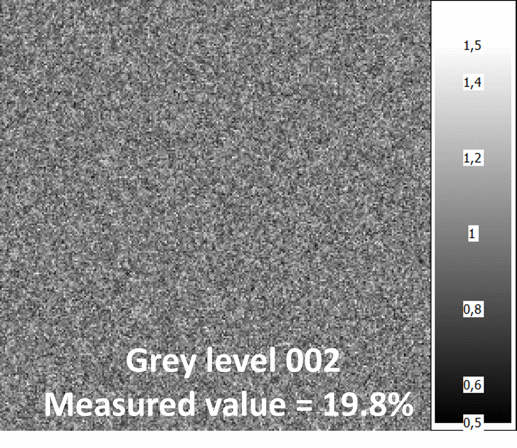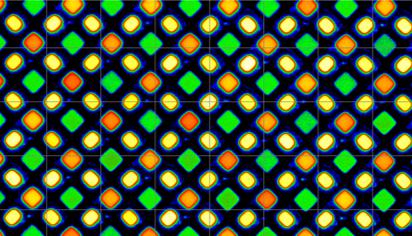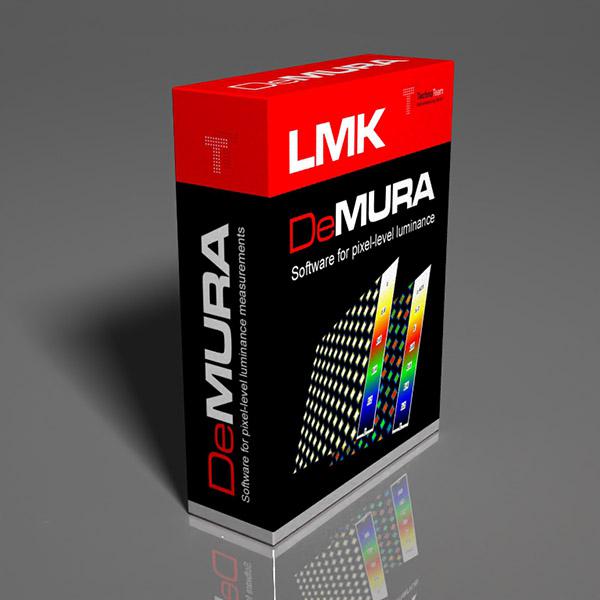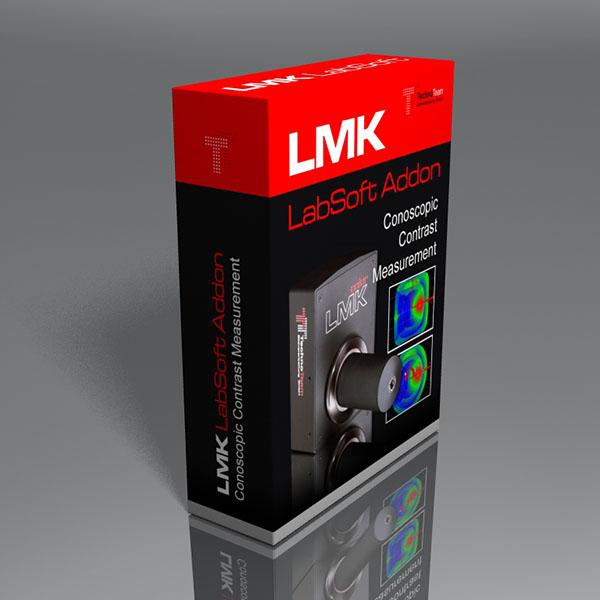Leuchtdichtebild eines OLED-Displays mit einem hochauflösendem Objketiv
OLED, MicroLED und LED Display
Displaytechnologien wie OLED und MicroLED zeichnen sich u. a. durch einen exzellenten Kontrast und einen großen Gamut aus. Durch stetige Verbesserungen werden sie in immer mehr Anwendungen genutzt, z.B. als Fernseher, in Smartphones und auch im Automobil oder als Microdisplays. Um die hohe Qualität dieser Displays gewährleisten zu können, sind neben Standardmessaufgaben wie Leuchtdichte und Farbe auch sehr spezielle Messanwendungen durchzuführen. Dies ergibt sich insbesondere dadurch, dass im Gegensatz zu LCDs jedes Displaypixel als eigene Lichtquelle fungiert. Es ist also kein lokales oder gar globales Backlight mehr vorhanden.
Zu solchen speziellen Messaufgaben zählt die Messung von temporären Geisterbildern oder einem permanenten Burn-In, welches durch eine starke Nutzung einzelner Pixel oder Pixelgruppen hervorgerufen wird. Diese können im Gegensatz zu LCDs auch farbabhängig sein, da die unterschiedlichen Farben von unterschiedlichen Materialsystemen erzeugt werden. Hier ist eine genaue Image-Sticking Messung unter Beachtung aller wesentlicher Aspekte besonders wichtig, da die Messung nach einem permanenten Burn-In nicht wiederholt werden kann.
Ein weiterer Anwendungsfall ist die Bewertung von produktionsbedingten Unterschieden der einzelnen OLED oder MicroLED. Dadurch können Leuchtdichten und Farbwerte der Subpixel so stark variieren, dass das Display dem Betrachter inhomogen erscheint. Diese nieder- und hochfrequenten Ungleichförmigkeiten werden bei dunklen Graustufen auch als Graininess oder DeepGreyMURA bezeichnet. Soll dies korrigiert bzw. kalibriert werden, so wird die Leuchtdichte von jedem Subpixel benötigt (DeMURA). Diese Messung kann auch für verschiedenene Graustufen und Farben notwendig sein. Insbesondere in der Produktion müssen diese Daten schnell erfasst werden.

Leuchtdichte basierte DeepGreyMura Auswertung eines OLED Displays auf Basis unserer hochfrequenten Gleichförmigkeitsanalyse "Sparkle"

Konzept von DeMURA
Unsere Lösungen
Unsere Leuchtdichtemesskameras und Softwarelösungen können sowohl für die allgemeine als auch für die speziellen Messaufgaben von OLED, MicroLED und LED-Displays genutzt werden. Für die Qualitätssicherung können die folgenden LabSoft-Add-Ons verwendet werden:
- Image Sticking (Geisterbilder und Burn-In)
- Sparkle (Bewertung der hochfrequenten Gleichförmigkeit wie z.B. Graininess und DeepGreyMura)
- BlackMURA (Bewertung der niederfrequenten Gleichförmigkeit)
- konoskopische Kontrastmessung (Bewertung der niederfrequenten Winkelgleichförmigkeit)
Für die Kalibrierung dieser Displays während der Produktion bieten wir Ihnen unsere DeMURA Software an, die jedem Subpixel eine graustufenabhängige Leuchtdichte zuordnen kann.
RELEVANTE PRODUKTE
RELEVANTE PUBLIKATIONEN
International Conference on Display Technology (ICDT 2024)
International Conference on Display Technology (ICDT 2023)
International Meeting on Information Display (IMID 2022)
To ensure a correct pixel registration (assigning the luminance to the correct pixel) in state of the art methods, display pixels are partially switched off [Patent US9135851B2]. However, this reduces cycle time and changes the average pixel level, which can affect the results.
We present a method to overcome these issues, called Advanced Pixel Registration (APR). It is based on a specific registration pattern applied during a teach-in process. An example pattern is provided in Figure 1 (left). After this initial registration, DeMURA measurements can be performed with only one image capture per input signal. The same is true for following displays during EOL testing, as small misalignments, which occur in production control environments as slight shifts, inclinations or rotations of the DUT (see Figure 2) can be corrected automatically.
This contribution validates the APR method using a flat and free-form curved display with methods similar to [] Feng, X. (2019), 78-2: Measurement and Evaluation of Subpixel Brightness for Demura. SID Symposium Digest of Technical Papers, 50: 1122-1125.]. The results show that the APR method can significantly improve the efficiency of DeMURA processes required for high-quality LED, OLED and MicroLED displays, regardless of their shape.







